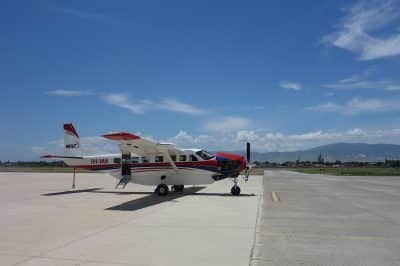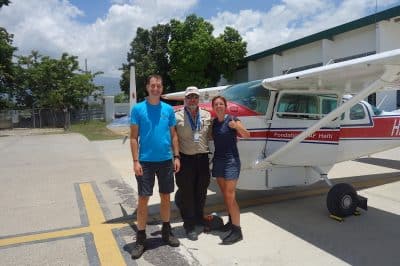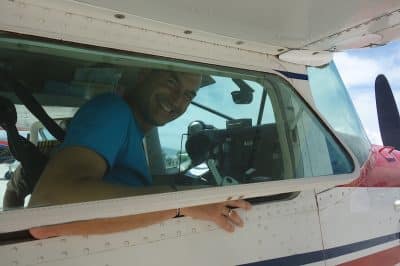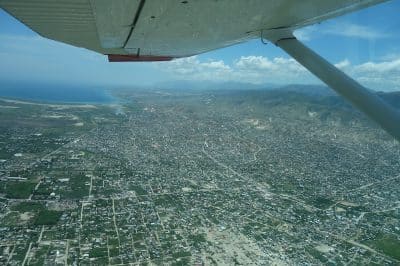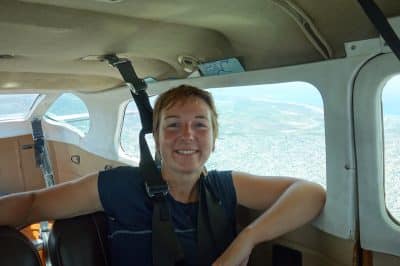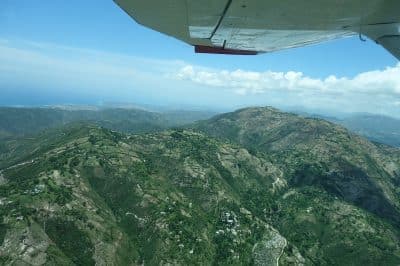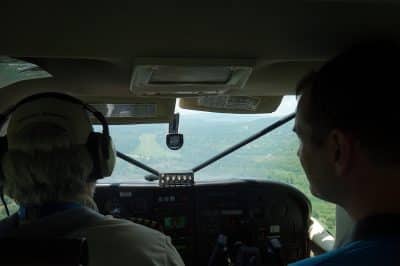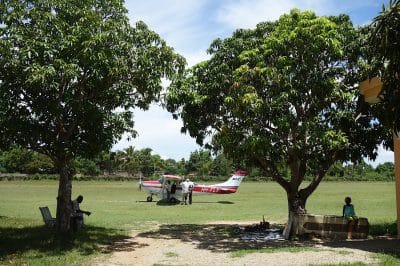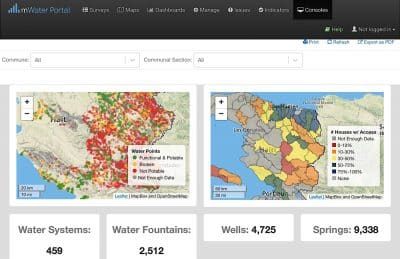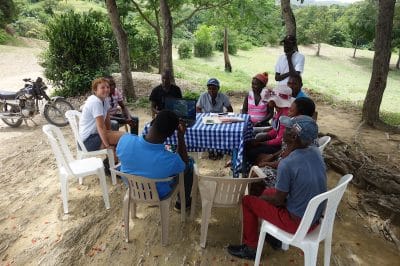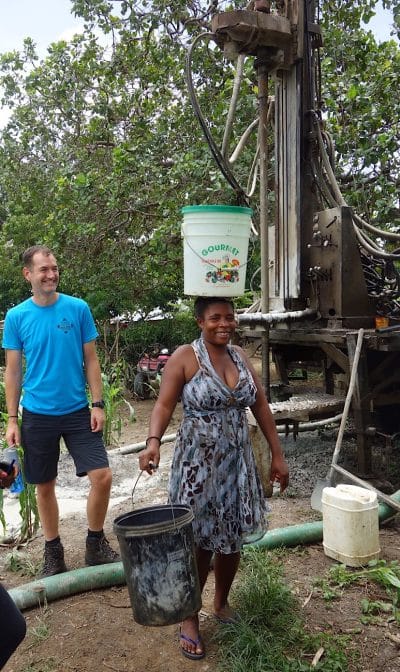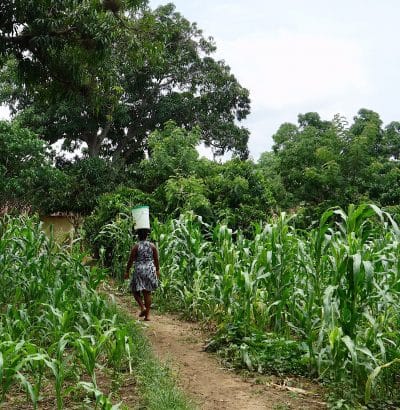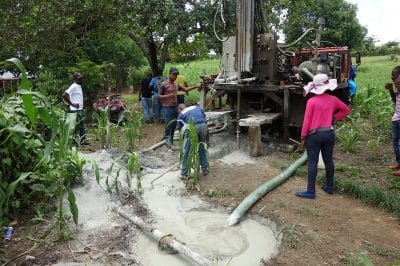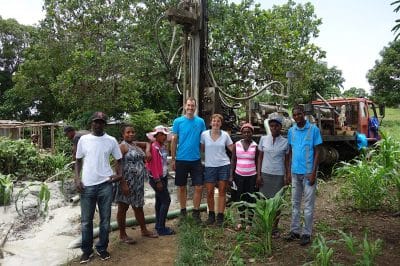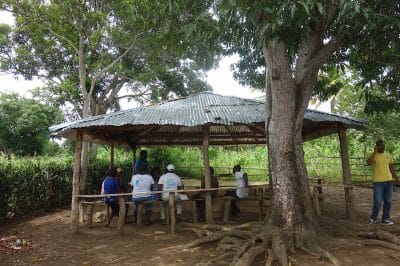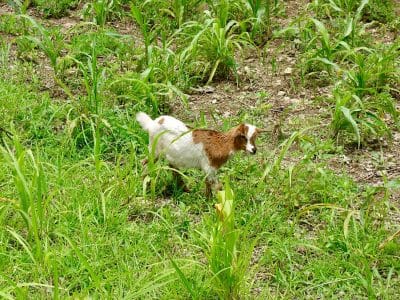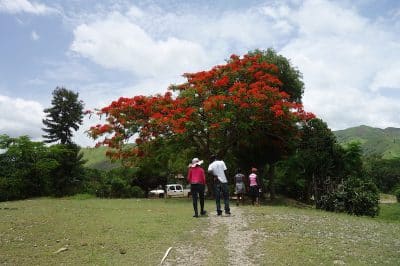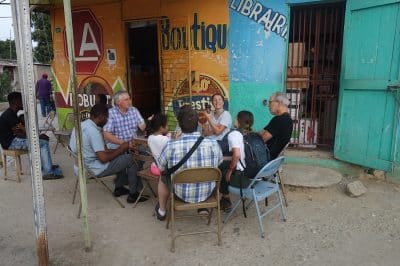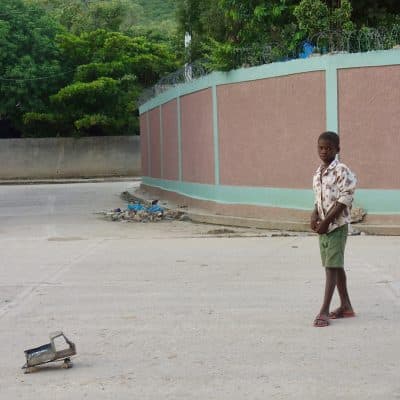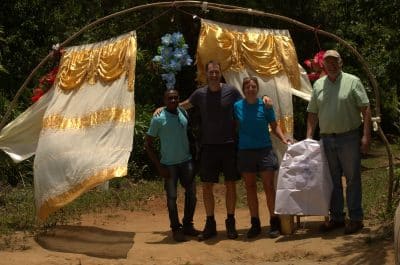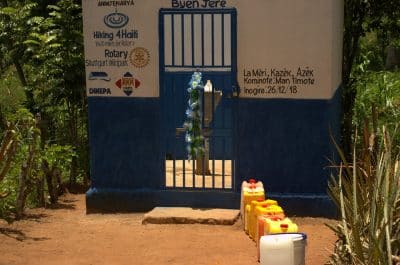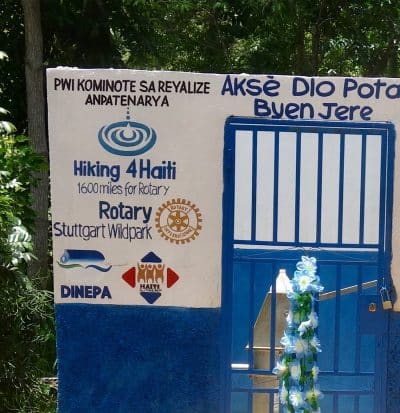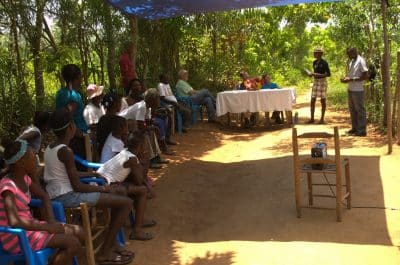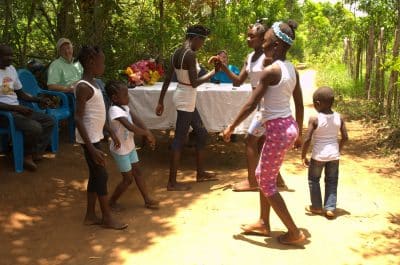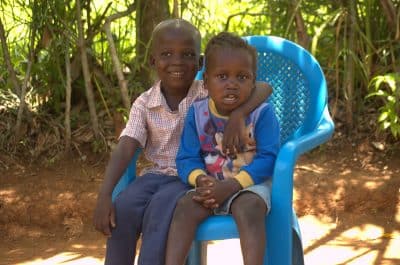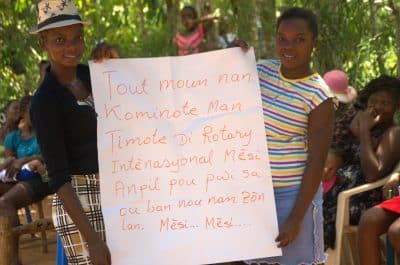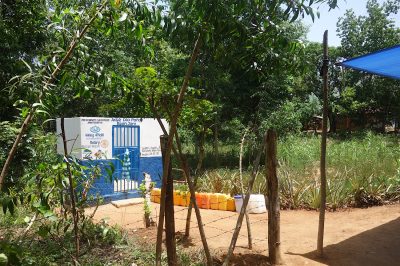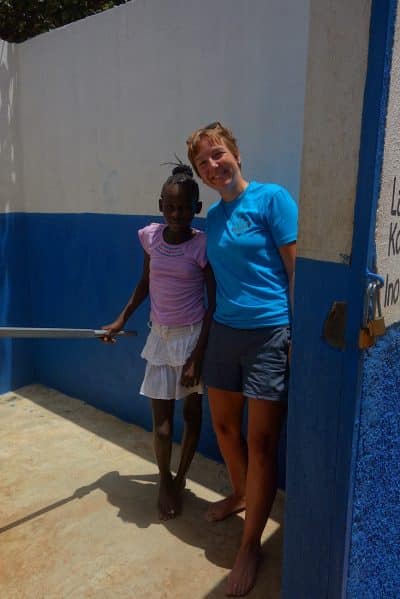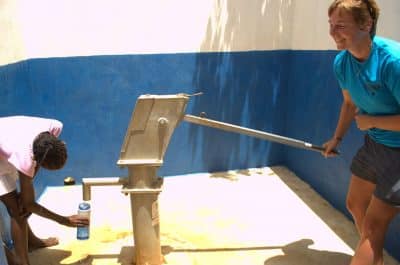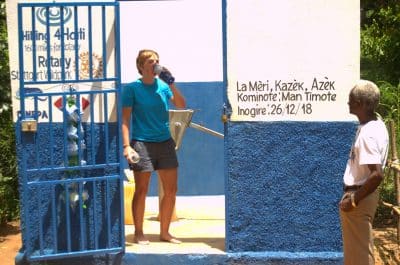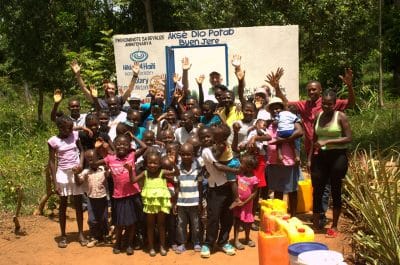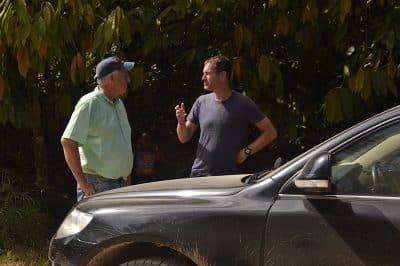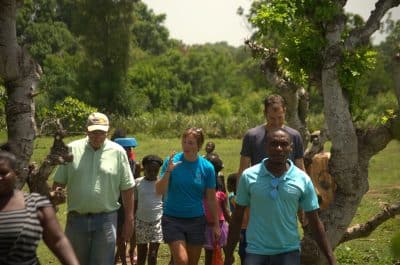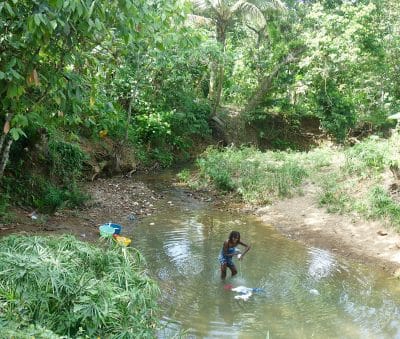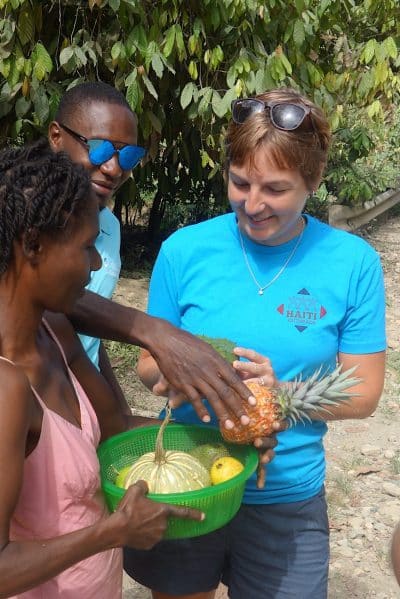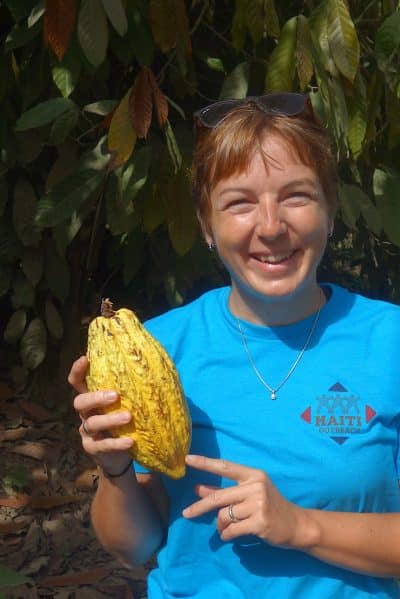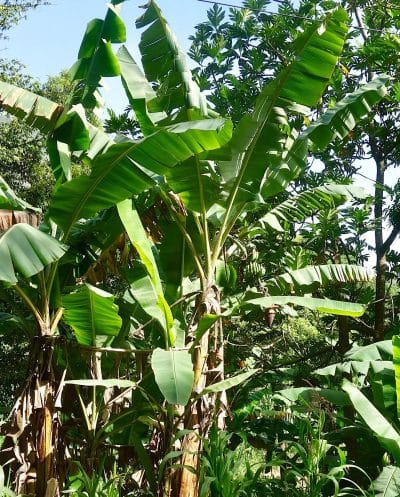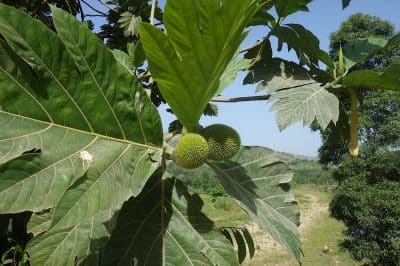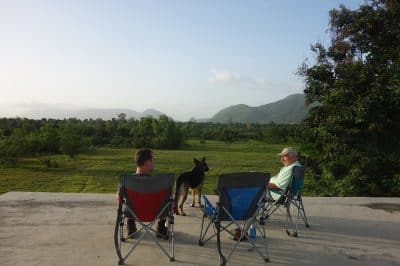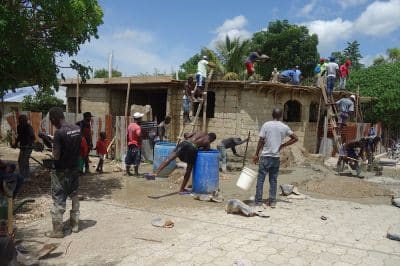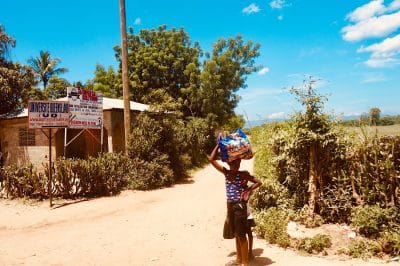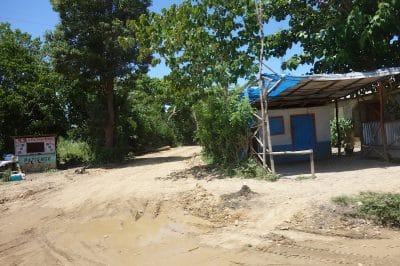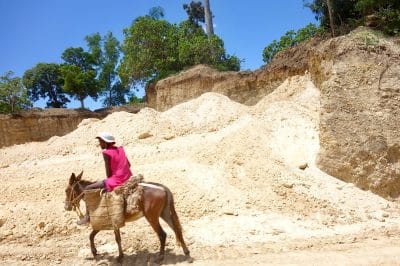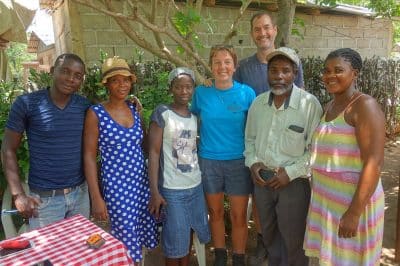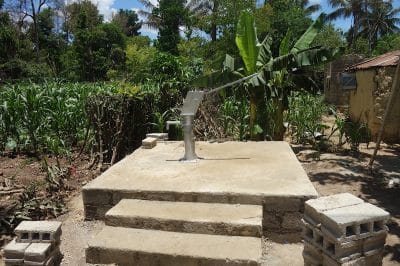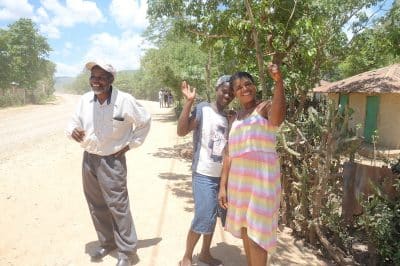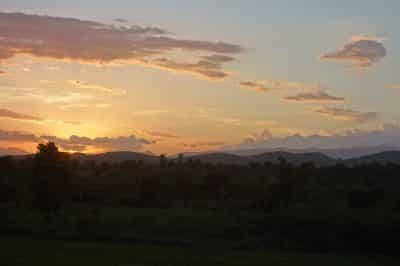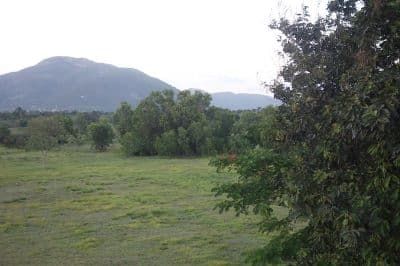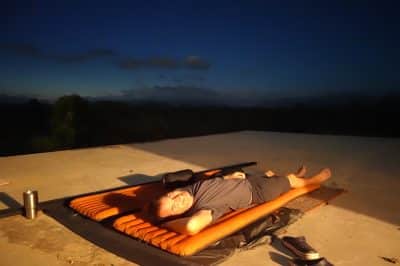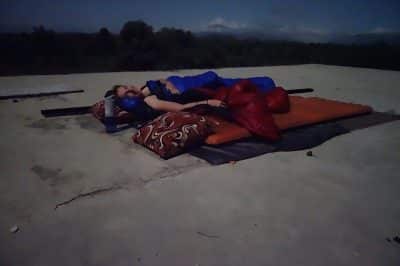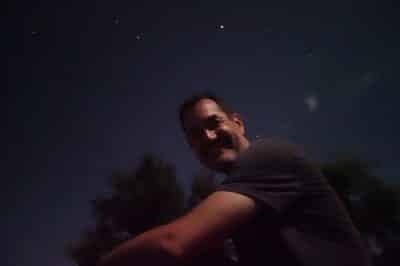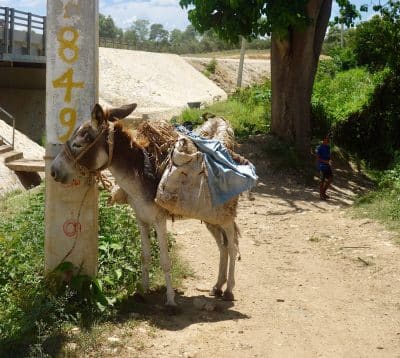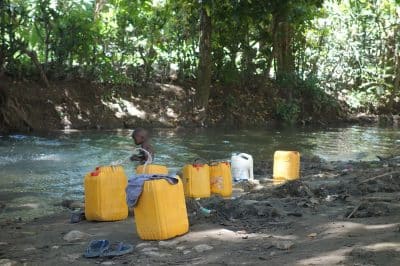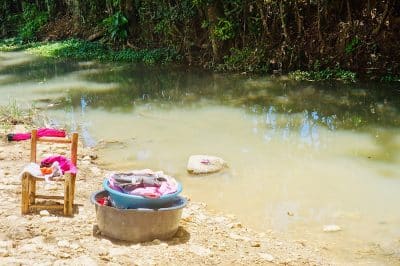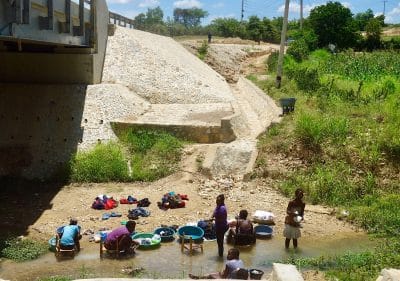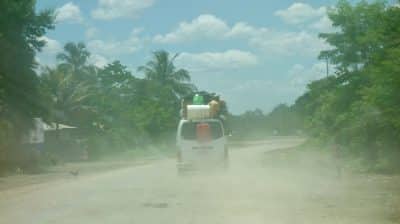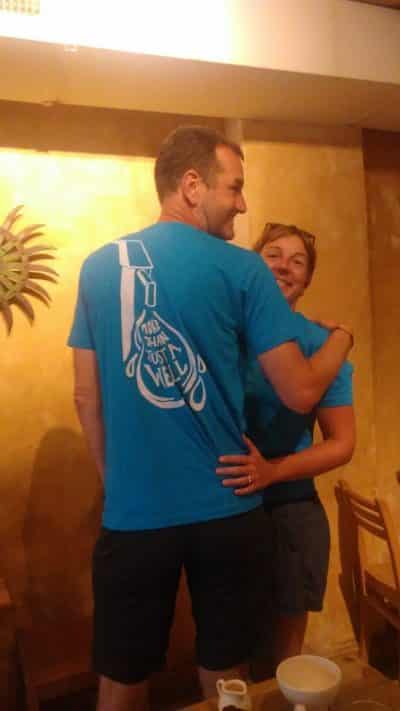Travel to Haiti – or – can you really land a plane on a meadow?
Now it’s time. After talking a lot about Haiti, having read a lot about the situation on the ground, we are now flying to see the country and the people with our own eyes. The journey is a bit long as we fly to New York – Miami – Panama City – Port au Prince. Yes, we know this is not the direct way… ? Unfortunately, that’s one of the few drawbacks of an “around the world” ticket that you always have to fly with Star Alliance. And so, the only way leads us with stop over at Panama City. Finally arrived in Port au Prince, we quickly get through the immigration formalities, not so much going on at the airport. The customs also is unproblematic, because there is none. Good, because we have a whole backpack full of leftover dry food with us and we didn`t know if that would be confiscated. So, we are quick to leave the terminal and are already expected by a Haiti Outreach employee. A short drive later we are at another small airport. For the way to Pignon we chartered a plane. Sounds decadent, right! The alternative is a long drive across Haiti. With the current unrest in the country (due to which there is an explicit travel warning from the Foreign Office), we have opted for this safe variant. Is not really expensive. Very well. We already see an airplane on the runway, oh, but that’s small. Well, I hope that’s safe … When I finally got used to the idea that we were flying with the little thing, another plane arrives. It looks like a toy version of an airplane. Ohhh, that will be ours. Can you even sit in it? You can! For Heiko it is a bit uncomfortable, but we can squeeze in even with our luggage. How do people do that who really have suitcases with them? Well, our backpacks find space in any case. Our pilot John is an American who, he assures me, has been flying since he was 13 years old. All right.
The flight is really nice when you get used to the fact that the plane is very small. We have calm weather and a magnificent view. And that without making first a strenuous climb on top of a mountain, great! We are approaching Pignon. Wait, there’s no runway at all. Yes, yes, John assures us and lands on a stretch of grass. Seriously?! OKAY… ?
The systematic of Haiti Outreach – to begin with in Theory.
We are greeted by Neill, one of the founders of Haiti Outreach. He is a native American, but now lives in Haiti for 30 years. He tells us that he has already built wells in the first years, but without his current system. After ten years, he has made an analysis of how many of the wells are still working. The result opened his eyes: 50% of the wells were no longer functional or the water was contaminated. This result is unfortunately exactly the success rate of all the pumps build in Haiti. Neill decided after this devastating data to change the way of working completely by starting Haiti Outreach with a system orientated approach. With this system he has now – proofed by excellent data – a result of 90% working wells after 20 years. So, I still can`t quite understand why this is so. As it suits my nature, I’m skeptical at first and want to see, ask and experience it myself.
But before we go into the field, we first learn in theory about the system. First, a map system was set up, along with the Haitian government and World Vision to visualize the current status of the water supply. Haiti Outreach refines these maps with additional information, such as water quality of the water source, number of people within 500 meters of the water source, number of houses with latrines, etc … The database serves as both a status and a planning tool. In addition, it is used for evaluation, as all fountains are inspected on a monthly basis, thus keeping the database up to date. With the help of this extensive data, the selection of the next regions for the construction of wells is transparent. Not Haiti Outreach prioritize but the local authorities in a workshop which takes place. This ensures that the Action Plan is needs-oriented and that it is make sure of that not personal preferences influence the selection. It also helps to focus because, overall, 52% of people have no access to clean water in Haiti. When a region is set, the process of change already begins, which in the end leads to the well and the community being “FRAPE”. FRAPE is an acronym of Creole words that stand for the following things:
F stands for functionality (the well works, water can be pumped),
R stands for taking responsibility (the community has independently developed a system to operate the well in the long term, including a census, setting a budget, the conviction of all or as many households as possible to use the well with payment of a fee, deciding about the opening hours, the implementation of a well-attendant, the discussions and negotiations with the local authorities, and so on).
A stands for sanitary, which means that every household has a latrine. Missing ones are built by the community independently.
P stands for potable water. Every well is being tested for potability with a series of tests. The communities consider in their budget that the testing can be repeated.
E stands for inspection. Every month after the inauguration of the well, the well is inspected by the community and Haiti Outreach and a report is made. The reports are then discussed with Haiti Outreach staff and measures are taken if necessary. The inspection is “ongoing”, so Haiti Outreach looks after all over 500 wells that they have built in the 20 years.
Only when the well and the community is “FRAPE”, the well is inaugurated with a big celebration. This takes 3-4 months depending on the community. So, the actual act of drilling the well is minimal compared to all other activities to ensure sustainability. After the briefing we are ready for the field visits. What has already impressed us very positively, is the systematics and transparency of the selection process for the projects, as well as the consistent project management behind the work. Great Job!
Our first visit “in the field”: Mendos Nr. 1
Our first field visit brings us to a community called Mendos # 1 (34 houses, 191 inhabitants).
Location Community Mendos Nr.1
We participate in a committee meeting (Each community determines a committee meeting that is more or less the project group for the well.) The committee has to have more women than men as participants, because the women are the ones who are responsible for the water supply). The community is already relatively advanced. Right now the well is being drilled. The content of this meeting is the preparation of the inauguration ceremonies. But first the President of the Committee tells us what has been achieved in the last three months. She proudly explains that all households except two have registered for the well. The idea of paying for water – even a small amount of money – is unusual in Haiti. To collect the money and manage the budget is one of the things which will help the community to stand on its own feet regarding the well. They use the money to maintain the well to pay the person who is opening the closing the money, to make tests about the water quality and to maintain the well in the long term. Nevertheless, “collecting” community members to subscribe is a task that is new to the committee members. In the process, they must stand up for their idea and conviction and sell the benefits of the well. At the beginning they are clearly outside their comfort zone. Step by step they take over responsibility. You can tell by observing the meeting that the members of the committee are growing in this task, getting stronger, increasing their self-confidence and learning that if you really want something and you work for it, it will eventually become reality. WOW. We are flattened by this pride and obvious development.
Bye the way, we understand that the usual practice of other non-profit organizations can not lead to the goal and even seems counterproductive, since here the water can be pumped for free, but nobody cares about the pump. It usually disintegrates after a few years or is contaminated. On our travels through Haiti we see countless of these abandoned and broken pumps.
All measures, Haiti Outreach presented to us in theory, we are now proudly presented by the community. That’s good implementation of theory to practice. From my own professional world, I know how hard it is to lead people so that they take the ideas and systematics wholeheartedly. Haiti Outreach is coaching the communities in this phase, guiding them through questions about what they need to do. Curious as we are, we want to visit the river, where so far water is fetched. Unfortunately, this means a walk of 1h and that does not fit in our schedule of the day. The women are amused at my interest of how they carry the water on their head. They show me how they do it. I also try my luck, but I cannot even stand with the bucket on my head let alone walk…. I do not know how they do that and they are honestly amused that I find it so hard … They giggle a lot about my attempts and after a time I need to realize that I am not going to be able to do it… After this, we look at where the drilling is going on and then say goodbye to this conmmunity with many good wishes and thanks on their part.
An Inspection meeting and a nice cold beer in the end of the day in the streets of Pignon.
Our next stop is an inspection meeting. 3 representatives from 3 communities have come to discuss their reports. The reports have been filled out in advance and refer both to actual to budget as well as a reflection on the established rules and their compliance. In terms of methodology, the meeting is structured in such a way that the Haiti Outreach staff is coach and facilitator of the meeting. The reports are exchanged among the communities and analyzed one another. Discrepancies are asked about and then discussed. Even though we do not understand everything, despite our translator, we realize in the observation that the discussion is open, serious and very problem solving orientated. There is a lively discussion about creating receipts for payment for water. A community has stopped issuing receipts because it requires more work. The other two communities argue vividly and fervently, pointing out that without receipts, transparency is lacking. At the end, it is agreed that receipts will be created again.
The meeting place is something special for us. If it is not used for official meetings, the place serves to practice cock fights, brrr, I do not necessarily have to see that.
In the evening, Neill takes us into town of Pignon and we get the chance to enjoy a cold beer while asking a lot of questions and discussing our observations. Poor Neill… ?
An emotional visit of “our” first community in Mantimote – or – how much rum are we able to drink?
The next day we visit “our” first community in Mantimote. Thanks to the many generous donations, we had already financed the first well at the end of last year. It will be exciting to see what has happened in the community – ½ year after the inauguration. Unfortunately, the community is a bit away and we are for the first time able to really “enjoy” the Haitian roads. There are mostly unpaved roads with big holes, so that driving is more like riding a roller coaster. We share the street with pedestrians who carry things (on the head of course), such as wood, water cans, buckets of laundry, etc, with packed donkeys, with motorcycles that seem dangerously overloaded with 3-4 people and now and then a tok Tok. This is the Haitian form of the taxi, their name is TokTok, because you knock the driver on the back if you want to get out. Near the border to the Dominican Republic is the community of Mantimote.
There are 29 houses with a total of 213 residents. The old water source was 45 minutes walk away. As we drive up, we see that we are eagerly awaited. At the entrance to the village receives us a decorated entrance, as well as a “Welcome Hiking4Haiti and Rotary Stuttgart Wildpark” sign. The little celebration begins with music, then prayers and finally a speech by the president of the committee. This speech moved me to tears, seriously, it was so moving to hear what life was like before, what they did to make the dream of clean water come true and how happy they are with this gift. With all the pride on their own accomplishments, she also knows the gift that you, dear donors, have given to this community. She thanks all the donors, people who did not even know that the community is existing, for willing to donate money so they can get potable water. For them, it seems like a miracle that their community has benefited from this donation. After this emotional speech I was very happy, that the kids of the community danced for us. So I had time to pull myself together… ? In the later conversation she tells that now all girls can attend the local school, since the water is no longer the main occupation. Another woman tells us that she is so grateful that her children no longer have diarrhea all the time. Wow, is it not depressing, that this is not a matter of course? I mean, we’re not talking about having water in their houses, which is a matter of course for us. This congregation is happy because they do not have to walk 45 minutes anymore and because the water does not make them sick anymore …
Of course, we use this opportunity to fill our own water bottles on “our” well!
Charged with all these impressions and experiences, we start our long journey home to Pignon. Along the way, Neill shows us cocoa trees, peanut bushes, banana trees, coconut trees, breadfruit trees, etc. Heiko would like to stop all the time to pick and eat everything … paradise! We close this great day with a rum on the roof of Neill’s house. He has a fantastic view from the roof and a good rum. The perfect end to an eventful day! As we empty the bottle of rum, the conversations get more and more philosophical. What great time! Nell is really a great guy, we had a great evening. Thankfully, the rum bottle was not quite full at the beginning, which we would surly have regretted the next day … ?
“Our”second community: Bohoc/Haff, a wonderful night under stars and a broken iphone!
The next day we visit Bohoc / Haff, a community of 64 houses, with 100% latrines and 345 people.
Here is going to be “our” second well installed. Actually, the inauguration was supposed to take place during our visit, but the process has been delayed because no water was found on the first drilling. Meanwhile, water is found, the pump installed. The well house and the painting of it is still missing. Only when all is done the well is inaugurated. Of course, we are disappointed, but we can understand that this can happen. We take the time to ask many questions to the community, and again are astonished about the passion and sincerity of the community with which they work to fulfill their dream of clean water. Anybody who knows a little bit of the culture and the way of thinking here in Haiti will know how outstanding this is. As we say goodbye, one of the committee members comes up to us. She was very cautious and shy during the meeting, and we realize that she has taken all the courage she has to approach us. But she really wants to say something to us. With the help of the translator, she gives us the following words: “I will with everything I am and I can do make sure that this generous gift is cherished and nurtured for life, so that we have clean water forever”. WOW, that was powerful to hear. It was so authentic and serious that it gave me goosebumps. But that’s exactly what we wanted to see: whether the donations are well spent to do good in the long term. After all the questions, visits and direct impressions, I can say: yes, they are!
If this is possible, we are even more convinced of the integrity and sustainability of the project and incredibly pleased to have chosen Haiti Outreach as our partner. Many organizations are building wells here, and few seem to focus on changing the community to greater responsibility like Haiti Outreach. And how is it supposed to work when a well is built, but the system community is not involved and at the end does not feel responsible. From what we have experienced here, it seems so clear and simple that this is the way to go. In long conversations with Neill he tells us that he is in contact with all NGOs in Haiti to share his database and system. The goal is 100% accessibility to water, and Haiti Outreach can only do that if other NGOs focus on helping the communities to take up responsibility. Anyone who deals with change management knows how time-consuming it is to change behaviors. Of course it is easier to build a well and then brag about the number of wells that have been built. To initiate real change is much more difficult. And then measuring sustainability is of course exhausting. Neill shows us “our” report. We get access to his database and can filter the project “Hiking4Haiti”. There you will find all the wells that we have funded with the number of people, the latrines, the account balance of the community and the monthly inspection report. In ten years’ time, we will still be able to see if and how the community develops. Great!
At the end of this day we take the opportunity to follow the invitation of Neill to spend the night on his roof. We are rewarded with an incredible starry sky. Since I had forgotten my ear plugs, I have an incredible amount of time watching the starry sky …. Why? All night we were accompanied by a cacophony of noises. Heiko slept while I listened to the neighing of the donkeys, the barking of the dogs, the crowing of roosters and many other unidentifiable sounds. I always thought the cocks crow only in the morning, puff pie, the critters crow all night! Out of sheer fear of mosquitoes we had an insect repellent oil. The thing has leaked overnight, of course, over my iphone. We have not seen any mosquitoes, but the iphone does not make anything any more. All passwords, banking, contacts, … gone. Well, we’ll fly to Canada soon, let’s see if and how much we can restore via an iCloud backup …. Stupid. But the night under the great starry sky was definitely worth it. ?
Our summary of the time in Haiti and a request to you for your support!
We leave Haiti with mixed feelings. On the one hand happy that your donations were so well used, on the other sad that still many people in Haiti have no clean drinking water access.
We are encouraged to help as many communities as possible. Please, help us! If you like our adventure, enjoy the blog and maybe even have not donated yet, please use this report as an opportunity to support the project. You can find all informations you need to donate on our homepage under “Donations”.
We are firmly convinced that these funds are very well invested. If there are any questions about Haiti Outreach, please contact us, we stand here with full conviction behind the system !!
Bye the way, shortly we will publish a movie of Haiti on our website. As you are going to be there anyway to make a donation 😉 , just have a look!

